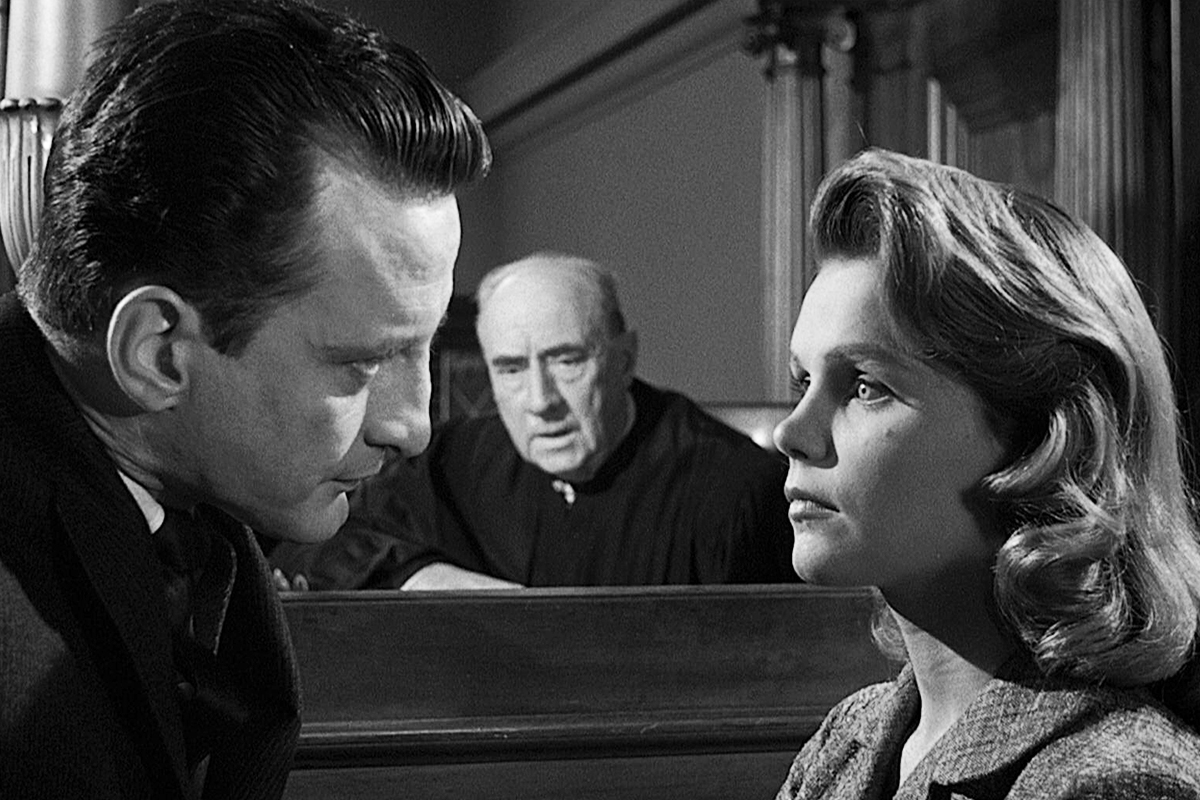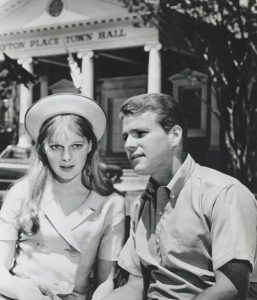Books
Pop Fiction's Rich History of #MeToo Drama

Lately, the very serious people who write about TV and film and books for publications such as the New Yorker and the New York Times have been tripping over themselves to heap praise on highbrow novelists, filmmakers, and screenwriters who have used their platforms to tackle issues such as rape and sexual harassment in the workplace in the wake of the #MeToo movement. To hear these writers rhapsodize about Susan Choi’s novel Trust Exercise or Lisa Hanawalt’s TV series Tuca and Bertie, one might conclude that these are the first creative endeavors that ask Americans to examine how unfair the contemporary workplace can be to women, how serious the threats of date rape and acquaintance rape are, and the many ways that powerful men such as Harvey Weinstein and Les Moonves can use their power to destroy the careers of subordinates who refuse their sexual advances.
My essay on the big wave of TV shows addressing MeToo, starting with the fascinating Tuca and Bertie: https://t.co/tfVXQIngZj
— Emily Nussbaum (@emilynussbaum) May 29, 2019
Writing in the New Yorker, Emily Nussbaum calls Tuca and Bertie “the latest in a deluge of TV series that feel like a direct response to the #MeToo movement, touching on third-rail themes that are meant not merely to comfort or inspire but to unsettle… It’s a powerful story, precisely because it doesn’t leave out the discomfort.” In the New York Times, book critic Parul Sehgal likewise praised several recent novels that deal with the collision of sex and power: “’#MeToo novels,’ they’re called, these disparate stories of sex and power suddenly regarded as timely, and read through the lens of an unfolding moment – with happy results, I’m about to argue…”
So-called “third-rail themes” are, by definition, things that no one wants to touch. But, over the past several decades, many writers—of both television and novels—have touched upon the topics Nussbaum and Sehgal mention, and they would have to have been living in a very insular New York cultural bubble to have avoided it all for so long.
While it may be true that very few of the writers who emerged from the creative-writing industrial complex that dispenses MFAs have written novels that anticipated the current #MeToo moment, plenty of good fiction has been written throughout the last half-century about men like Weinstein and Moonves. Alas, this fiction was written for a wide readership, by artists not endowed with a Seal of Approval from Stanford’s Stegner Fellowship or the Iowa Writers Workshop, and has thus tended to be dismissed as mere pop-fiction by publications such as the New Yorker—that is, when they deigned to acknowledge its existence at all. But English-language popular fiction has nonetheless done a pretty good job of telling the truth about how the powerful can prey upon the powerless, sexually and otherwise, in the workplace and just about every other venue of contemporary life as well.
Just as feminists grow indignant when they see articles praising fathers for doing things (washing dishes, changing diapers, attending PTA bake sales, and so on) that mothers have been doing for eons, so do I grow indignant when I see writers of “serious literary fiction” getting praise for doing something that pop-fiction writers have been doing for eons.

Mia Farrow and Ryan O’Neal in Peyton Place
Let’s begin with the book that many credit with kicking off the craze for salacious popular fiction: Peyton Place. Grace Metalious’s 1956 novel has been derided as sleazy, scandalous, and poorly written, but no one can say that it doesn’t address, in a fairly serious fashion, issues of importance to the #MeToo movement. One of the book’s main characters, teenager Selena Cross, is raped and impregnated by her stepfather. In her study of the novel, Unbuttoning America: A Biography of Peyton Place, scholar Ardis Cameron writes:
[N]o one familiar with the horror of child sexual abuse would ever dismiss Peyton Place as trash. A rare portrait of incest in the fifties, Metalious’s description of child sexual abuse remains vividly realistic today. In almost every detail the story of Selena Cross conforms to recent clinical and historical studies that have revealed the discrepancies between the myth and reality of girlhood sexual assault.
The novel also deals with workplace power dynamics. Another main character, Constance MacKenzie, leaves Peyton Place for New York City as a very young woman. She gets a job in the publishing industry, where she winds up being seduced and impregnated by her married employer. Naturally, he doesn’t leave his wife and legitimate children to take care of Constance and her daughter, Allison.
The Best of Everything, a 1958 pop fiction by Rona Jaffe, also dealt, in part, with the sexual harassment of young women in the publishing industry. But, like Peyton Place, it was generally dismissed by literary snobs as beneath consideration. That year also saw the publication of Anatomy of a Murder, a courtroom drama by Robert Traver (the pen name of Michigan Supreme Court Justice John D. Voelker) that dealt with rape and murder, sexual promiscuity, and whether some women are “asking for it” by behaving or dressing in a “provocative” manner. Parul Sehgal’s article praises Susan Choi’s Trust Exercise and Anna Burns’s Milkman for providing readers with “inconsistencies and incoherence, stories that thicken the mysteries of memory and volition.” Traver’s novel did exactly that nearly 60 years prior to the advent of the #MeToo movement. And just as many of today’s #MeToo novels seem to be addressing specific stories from contemporary newspaper headlines, Anatomy of a Murder was based on an actual rape-and-murder case and the many thorny issues it raised in the public consciousness.

This is true of countless pop fiction novels. Norman Katkov’s 1983 bestseller Blood & Orchids was based on the infamous Massie Affair, a scandal that rocked Honolulu in the 1930s andwhich mixed volatile elements such as race, rape, revenge killing, class distinctions, and domestic violence. Like much of his fiction, Dominick Dunne’s 1993 novel, A Season in Purgatory, was inspired by the real-life bad behavior of rich and powerful men. It presented a lightly fictionalized account of the 1975 murder of 15-year-old Connecticut schoolgirl Martha Moxley, a crime that led to the conviction of a minor member of the Kennedy clan. After his own daughter was strangled to death at the age of 22 in 1982, Dunne became an obsessive chronicler of the ways in which powerful men can ruin vulnerable women, often with near-impunity (his own daughter’s murderer served only three years and eight months in prison). America’s cognoscenti have been heaping praise upon Dunne’s sister-in-law Joan Didion for decades. But despite the fact that he spent almost his entire writing career telling stories sympathetic to the #MeToo cause, Dunne has never won much attention from the serious literary community.
Much of the energy of the #MeToo movement has centered on high-profile men in media, such as Charlie Rose, Matt Lauer, Bill O’Reilly, Dustin Hoffman, Kevin Spacey, Bryan Singer, and, of course, Weinstein and Moonves. Popular fiction has long focused on the precarious position of young women in media professions, particularly show business. Because of their boundless appetite for people who are photogenic and exude sex appeal, Hollywood and Broadway attract hordes of young and very attractive women and men to their casting offices every year. This combination of guileless and beautiful show-biz aspirants and older men with the power to make or break a career has lent itself to all sorts of abuse for as long as there has been a film industry or a Great White Way. Probably much longer. And pop fiction has been documenting this sad phenomenon for decades.
One of the best depictions of a woman abused by high-powered men in show business is Queenie, written by Michael Korda and based loosely on the life of his aunt, Anglo-Indian film star Merle Oberon. The book was published in 1985 and my paperback edition is adorned with endorsements from the likes of Sydney Sheldon and Jackie Collins, which should establish its bona fides as a true piece of pop fiction. But the book is also a searing and serious look at the price beautiful girls and young women often have to pay for any kind of show business success (sometimes even for failure). As a young schoolgirl in India, the beautiful protagonist of Queenie finds herself sexually exploited by her drama teacher. Later, she and her uncle will escape to London, where she hopes to pursue a career on stage. The uncle, who has long harbored an incestuous lust for young Queenie, now has total control over her welfare, and he uses it to rape her. As she makes her way to the top of show business venues in London, New York, and, eventually, Hollywood, Queenie (now using the stage name Dawn Avalon) finds herself being sexually exploited every step of the way. At one point she muses:
Men controlled the world, whether it was movies, banking, or journalism—even here in Hollywood, where the whole industry revolved around the sex and glamour of a few female stars. A beautiful woman earned a fantastic salary…but no matter how much money she earned, she was never the one who made the decisions or shared in the profits.
Three years after his own novel was published, Korda, who was the longtime editor-in-chief of Simon & Schuster, helped bring to print A Glimpse of Stocking, a novel by the pseudonymous Elizabeth Gage, and an even more coruscating exposé of the way that some powerful Hollywood producers treat young starlets like cheap toys. Harvey Weinstein’s career was still nascent at the time, so the portrait of fictional film producer Harmon Kurth, described on the dust jack as “the most sadistic and dangerous of Hollywood’s superpowers,” couldn’t possibly have been based on him. But reading the book, one might easily forget that fact. Here’s how Gage introduces her villain:
[T]o the public at large, Kurth was a pillar of responsibility and commitment to social justice who bore a mantle of dignity more impressive than that of any film producer in history.
He had seen to it, over the years, that International Pictures made more than its share of serious, socially conscious films – films which garnered critical praise and Best Picture Academy Awards for the studio in far greater proportion than the efforts of its rivals.
Kurth was himself a former advisor to two Presidents on problems in culture and communication…an honorary doctorate holder from several universities, and a key contributor to countless charitable causes. Harmon Kurth was a living legend.
He’s also a monster who rapes young starlets and then pays them off with small movie roles to keep them quiet. Although much of the novel is pure pulp escapism, the scene where Kurth physically assaults the book’s protagonist, aspiring actress Annie Havilland, reads more like true crime. Alas, when she reports the assault, the police arrest not Kurth but Annie, and charge her with solicitation. After studying the arrest report, Annie’s own attorney tells her, “Rape is a complicated crime. Annie, you are an aspiring actress. A starlet, Kurth’s attorneys will say. And you went to Kurth’s house to discuss an important role. It will be just as easy for Kurth to say you propositioned him as it is for you to say he forced you. Besides, he has three witnesses, all pillars of the community, who contribute to the Policemen’s Benevolent Fund and have lunch every week with this town’s major judges—and all three will swear they were there the whole time, heard your proposition, and saw you leave uninjured.”
I’ll concede that there are plenty of pop fictions that treat the sexual abuse of women as something titillating or, even worse, amusing. For every Peyton Place, which deals honestly with the horror of a young girl being raped by her stepfather, you get a book like Richard Adams’s massive (and massively awful) fantasy novel Maia, which describes the statutory rape of its 15-year-old title character by her stepfather like this:
The moment he entered her, Maia was filled from head to foot with a complete, assenting knowledge that this was what she had been born for. All her previous, childish life seemed to fall away beneath her like broken fragments of shell from the kernel of a cracked nut. Tharrin’s weight upon her, Tharrin’s thrusting, his arms about her, were like the opening of a pair of great doors to disclose some awesome and marvelous treasure within.
For a much better pop-fictional treatment of an underage girl experiencing her first encounters with sex (in the arms of her mother’s lover, no less) try Janet Inglis’s 1994 novel Daddy’s Girl, which depicts the pleasure, pain, confusion, guilt, and self-loathing that can accompany a wholly inappropriate initiation into physical “love.” Or you can try just about any of the YA novels written by Norma Klein back in the 1970s (Mom, the Wolf Man and Me; It’s Not What You Expect; It’s Okay If You Don’t Love Me, etc). She made a specialty of that kind of thing.
Another pop fiction that ought to be better known is Shane Stevens’s 1979 novel By Reason of Insanity. Probably no book does a better job of showing how a single act of sexual violence can create a vicious cycle that spreads like a disease throughout society. It is a crazily ambitious novel that weaves together real-life people and events in American history with fictional ones. The triggering act of violence is the rape of a 21-year-old woman, in September of 1947, by notorious Los Angeles thief and rapist Caryl Chessman. Sara Bishop becomes pregnant as a result of the rape and, of course, in 1947 abortion isn’t an option for her. The rape leaves her with a deep-rooted hatred of men, which she takes out on the son she and Chessman produced. The son, Thomas Bishop, in turn, develops an antipathy towards womankind that leads him to become a serial rapist and murderer. For hundreds of pages Stevens manages to weave together tales of Bishop’s unfortunate and socially-insignificant victims with tales of how the killing spree affects larger aspects of American society, from the Mafia to a logging conglomerate in the Pacific Northwest (I kid you not) to the White House. In fact, Richard Nixon eventually takes on a speaking role in the story. Stevens understands that crime and abuse are usually continuums, part of a worsening progression, rather than random standalone events.
Curiously, the snobbish periodicals that never bothered to review the likes of Patricia Highsmith, Jim Thompson, Philip K. Dick, or Elmore Leonard back in the 1960s when they were all near the height of their novelistic powers, began to embrace these authors in the 1980s and ’90s when their books were made into prestigious A-list Hollywood films such as The Talented Mr. Ripley, The Grifters, Minority Report, and Out of Sight. The same is true of television. Prestige television is the homage that snobbery pays to populism. Writers and publications that never would have deigned to review a novel by Michael Crichton or George R.R. Martin back in the 1980s now offer in-depth recaps of every episode of West World and Game of Thrones. Writers who wouldn’t have deigned to read one of Liane Moriarty’s pop fictions a few short years ago now gush about the brilliance of HBO’s Big Little Lies. Apparently, all it takes to make a silk purse out of a sow’s ear is the presence of a few A-list actresses like Nicole Kidman and Reese Witherspoon and a change of setting from upper-middle-class Sydney, Australia, to crazy rich Monterey, California.
But in the world of highbrow TV criticism, it is the more avant-garde shows such as Tuca and Bertie, Fosse/Verdon, Barry, and Fleabag that come in for most of the praise. Emily Nussbaum’s New Yorker article makes no mention, for instance, of the Netflix drama High Seas, a soapy Spanish import that sets an Agatha Christie-like mystery aboard a luxury liner in the late 1940s. After all, High Seas was made for lunkheads like me who enjoy melodrama and romance, but its storyline includes rape and spousal abuse and those issues are explored with the appropriate gravity. Crowd-pleasing television gets no more love from serious critics than does crowd-pleasing fiction.
Pop fiction has never shied away from subjects that people in polite circles would probably rather not discuss: incest, rape, Satanism, murder, prostitution, under-aged sex, and so on. I’m glad that serious literary types are starting to embrace lurid subject matter as enthusiastically as pop-fiction writers always have. But they shouldn’t be celebrated as groundbreakers. That ground was covered thoroughly long before #MeToo arrived on the scene.





